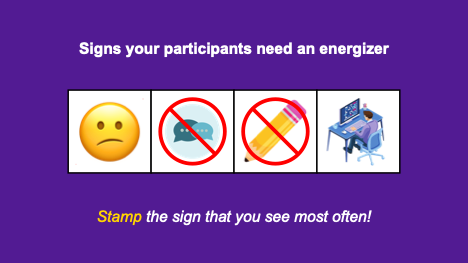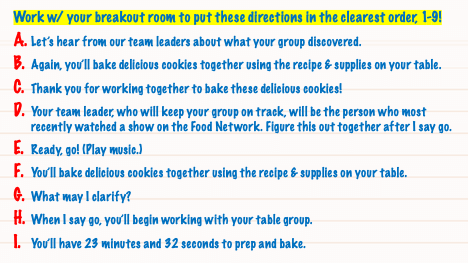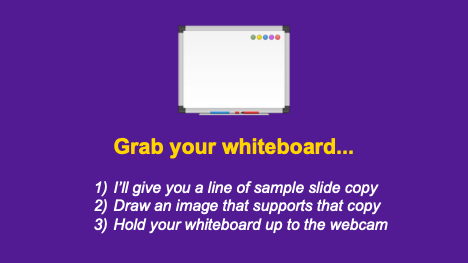


New perspectives. New attitudes. New behaviors.
Delivering these things to your learners is a noble cause…but a difficult one.
How can you overcome their misguided assumptions, false beliefs, and entrenched habits?
Focus on creating training content that takes learners on this four-step journey of transformation.

These are slides/activities that give learners a chance to identify/name a problem or challenge they might be facing and actively admit they need a solution to that problem.
This helps them see their need for the content you're about to deliver to them, which will help them resolve the challenges they identify in the recognition activity.
Here are tons of examples...
Which sign that your participants need an energizer do you see most often? Blank stares? Limited action in the chat box? Limited engagement with annotation tools? Or simply that they’ve been sitting for a while?

Which of these is your biggest challenge?
Which attribute of a pizazz-y presenter do you want to improve on most?
What are the “neuralyzers” that cause your learners to forget your training content?
How could you use a recognition slide/activity to help your learners recognize their need for your content?

Now that you've helped your learners recognize a challenge that they need to solve, this presents a critical opportunity to make a promise to your learners as to how your training content will help them solve their problem.
This will hold their interest and curiosity and cause them to be far more engaged in the rest of your class.
Great promises often involve a new perspective on the problem that your training will deliver, a series of solution-driven steps or tactics you'll show learners.
Here are some examples of how to make compelling promises to your learners...
How could you use one or more promises to help your learners stay engaged with the rest of your training?

Learners desire resolution to unanswered questions.
So if you can structure your training, and especially your handout, in a way that makes them strive for completion, they'll be much more engaged.
One example of how to do this is having your learners make their best educated guesses about what goes in the blanks in their handout, and then debriefing the correct answers after you give them time to guess.
They'll be far more invested and interested than if you were to simply give them the right answers in a lecture and then quiz them afterward.
Here are some examples of compelling completion activities...
This breakout room below helped learners discover the nine-step process for delivering clear activity instructions.

How could you use a completion activity to help your learners be more invested and interested in your content?

It's one thing to promise and deliver on showing learners the productive action steps they will need to take after the training.
But if you want to truly set them up for success, be sure to give them time within your actual training to practice the application steps they'll need to take after the training…and ideally receive feedback from you as the trainer.
Here is an example of an action step/application activities. This activity lets learners practice applying the keys to creating visually engaging slides…

How could you allow your learners to practice their action steps during your webinars?
And which of those four steps to sparking change in your learners will make the biggest difference in your trainings?
Don't miss out on updates and chances
to sharpen your skills with participant-centered learning.




3740 N Chestnut St #113 - Chaska, MN 55318-3053